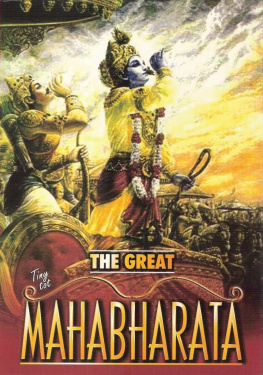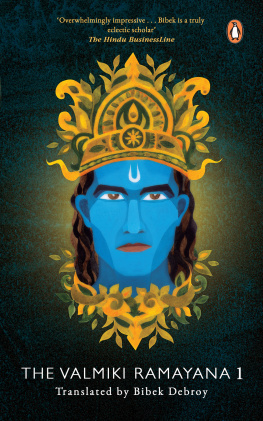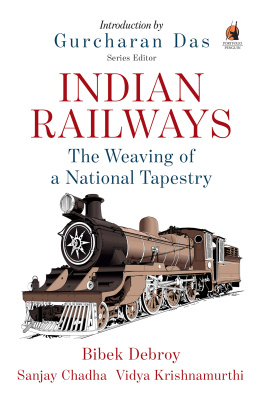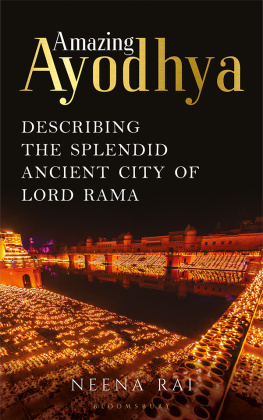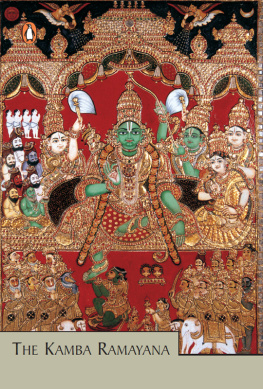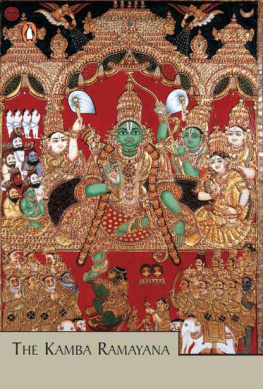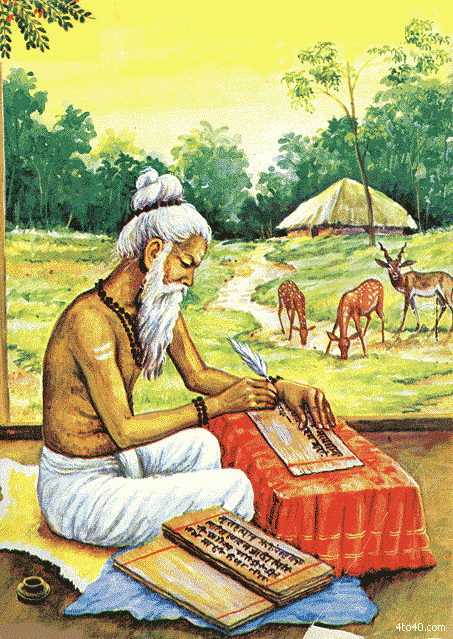Bibek Debroy is a renowned economist, scholar and translator. He has worked in universities, research institutes, industry and for the government. He has widely published books, papers and articles on economics. As a translator, he is best known for his magnificent rendition of the Mahabharata in ten volumes, and additionally the Harivamsha , published to wide acclaim by Penguin Classics. He is also the author of Sarama and Her Children , which splices his interest in Hinduism with his love for dogs.
Praise for The Mahabharata
The modernization of language is visible, its easier on the mind, through expressions that are somewhat familiar. The detailing of the story is intact, the varying tempo maintained, with no deviations from the original. The short introduction reflects a brilliant mind. For those who passionately love the Mahabharata and want to explore it to its depths, Debroys translation offers great promise . . . Hindustan Times
[Debroy] has really carved out a niche for himself in crafting and presenting a translation of the Mahabharata . . . The book takes us on a great journey with admirable ease Indian Express
The first thing that appeals to one is the simplicity with which Debroy has been able to express himself and infuse the right kind of meanings . . . Considering that Sanskrit is not the simplest of languages to translate a text from, Debroy exhibits his deep understanding and appreciation of the medium The Hindu
Debroys lucid and nuanced retelling of the original makes the masterpiece even more enjoyably accessible Open
The quality of translation is excellent. The lucid language makes it a pleasure to read the various stories, digressions and parables Tribune
Extremely well-organized, and has a substantial and helpful Introduction, plot summaries and notes. The volume is a beautiful example of a well thought-out layout which makes for much easier reading Book Review
The dispassionate vision [Debroy] brings to this endeavour will surely earn him merit in the three worlds Mail Today
Debroys is not the only English translation available in the market, but where he scores and others fail is that his is the closest rendering of the original text in modern English without unduly complicating the readers understanding of the epic Business Standard
The brilliance of Ved Vyasa comes through, ably translated by Bibek Debroy Hindustan Times
For Professor Shailendra Raj Mehta
Introduction
T he Ramayana and the Mahabharata are known as itihasa s. The word itihasa means it was indeed like that. Therefore, the word is best rendered as legend or history, and not as myth. This does not mean everything occurred exactly as described. In a process of telling and retelling and oral transmission, embellishments are inevitable. However, the use of the word itihasa suggests a core element of truth. There were two great dynasties surya vamsha and chandra vamsha . The first proper king of the surya vamsha was Ikshvaku and the Ramayana is a chronicle of the solar dynasty, or at least a part of its history. Similarly, the first king of the chandra vamsha was Ila and the Mahabharata is a chronicle of the lunar dynasty. The Puranas also describe the histories of the solar and lunar dynasties. Though there are some inconsistencies across genealogies given in different Puranas, the surya vamsha timeline has three broad segments: (1) from Ikshvaku to Rama; (2) from Kusha to Brihadbala; and (3) from Brihadbala to Sumitra. In that stretch from Ikshvaku to Rama, there were famous kings like Bharata (not to be confused with Ramas brother), Kakutstha, Prithu, Yuvanashva, Mandhata, Trishanku, Harishchandra, Sagara, Dilipa, Bhagiratha, Ambarisha, Raghu, Aja and Dasharatha. These ancestors explain why Rama is referred to as Kakutstha, Raghava or Dasharathi.
Rama had two sonsLava and Kusha. Ikshvaku and his descendants ruled over the kingdom of Kosala, part of todays Uttar Pradesh. The Kosala kingdom lasted for a long time, with the capital sometimes in Ayodhya and sometimes in Shravasti. When Rama ruled, the capital was in Ayodhya. After Rama, Lava ruled over south Kosala and Kusha ruled over north Kosala. Lavas capital was in Shravasti, while Kushas capital was in Kushavati. We dont know what happened to Lava thereafter, though he is believed to have established Lavapuri, todays Lahore. The second segment of the surya vamsha timeline, from Kusha to Brihadbala, doesnt have any famous kings. Brihadbala was the last Kosala king. In the Kurukshetra War, he fought on the side of the Kouravas and was killed by Abhimanyu. The third segment of the surya vamsha timeline, from Brihadbala to Sumitra, seems contrived and concocted. Sumitra is described as the last king of the Ikshvaku lineage, defeated by Mahapadma Nanda in 362 BCE . Sumitra wasnt killed. He fled to Rohtas, in todays Bihar.
The Ramayana isnt about these subsequent segments of the timeline. Though there are references to other kings from that Ikshvaku to Rama stretch, it isnt about all of that segment either. Its focus is on Rama. It is difficult to date the poet Kalidasa. It could be anytime from the first century CE to the fifth century CE . Kalidasa wrote a mahakavya known as Raghuvamsha . As the name of this mahakavya suggests, it is about Raghus lineage, from Dilipa to Agnivarna, and includes Rama. But it isnt exclusively about Rama. Ramayana is almost exclusively about Rama. Thats the reason it is known as = + . means travel or progress. Thus, Ramayana means Ramas progress. There is a minor catch though. means travel or progress and is a meaningless word. The word used in Ramayana is , not . This transformation occurs because of a rule of Sanskrit grammar known as internal sandhi . That is the reason becomes .
Who is Rama? The word means someone who is lovely, charming and delightful. There are Jain and Buddhist versions ( Dasharatha Jataka ) of the Rama account and they differ in significant details from the Ramayana story. For instance, in Jain accounts, Ravana is killed by Lakshmana. In Dasharatha Jataka , Sita is Ramas sister. In Ramayana and Purana accounts, Rama is Vishnus seventh avatara . follow each other and one progressively goes down krita yuga (alternatively satya yuga ), treta yuga, dvapara yuga and kali yuga , before the cycle starts again. In the list of ten avataras, matysa, kurma, varaha and narasimha are from the present krita yuga; Vamana, Parashurama and Rama are from the present treta yuga; Krishna is from dvapara yuga; and Buddha and Kalki are from kali yuga. Rama was towards the end of treta yuga. (In the Uttara Kanda, dvapara yuga has started. ) Just as Krishnas departure marked the transition from dvapara yuga to kali yuga, Ramas departure marked the transition from treta yuga to dvapara yuga.
When did these events occur? It is impossible to answer this question satisfactorily, despite continuous efforts being made to find an answer. At one level, it is an irrelevant question too. There is a difference between an incident happening and it being recorded. In that day and age, recording meant composition and oral transmission, with embellishments added. There was noise associated with transmission and distribution. It is impossible to unbundle the various layers in the text, composed at different points in time. Valmiki is described as Ramas contemporary, just as Vedavyasa was a contemporary of the Kouravas and the Pandavas. But that doesnt mean todays Valmiki Ramayana text is exactly what Valmiki composed, or that todays Mahabharata text is exactly what Krishna Dvaipayana Vedavyasa composed. Therein lies the problem with several approaches to dating.


